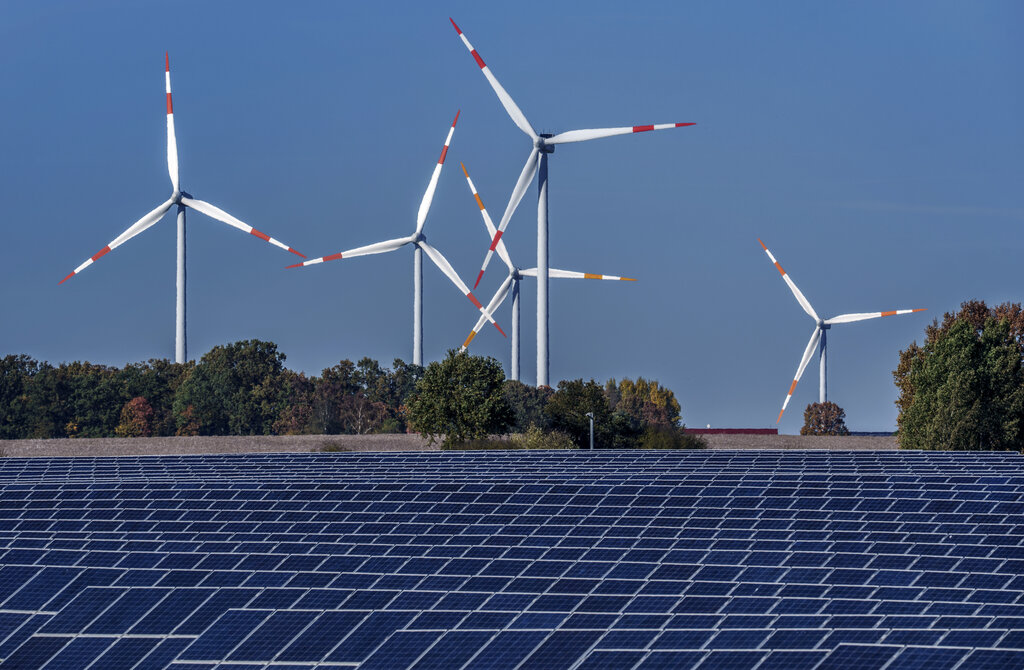Inflation gauge shows a 6.4% increase after the sharpest price jumps in four decades
An inflation gauge monitored by the Federal Reserve has increased 6.4% in the last year, according to ABC.
The long-term average annual inflation increase is approximately 3.25%.
High consumer demand and shortages of many goods have resulted in the sharpest price jumps in four decades. The report does not include the consequences of Russia’s invasion of Ukraine, which has impacted global oil markets and increased prices for other important commodities.
Gas prices have also soared in the past month. The national average is now $4.24 a gallon, 63 cents more than a month ago.
While spending on services grew, purchases of furniture, clothes and other goods dropped 2.1%. Some economists suggested that this shift away from purchasing goods might cool inflation. However, prices for goods are still rising.
Many economists, including Michael Feroli of JPMorgan, anticipate the Federal Reserve will raise its key rate by a half-point in May and June, which it hasn’t done in two decades.
Economists still expect inflation to peak in the months to come as price spikes occurring in the last year will begin to make the year-over-year price increases appear smaller.
Biden acknowledges Transgender Day of Visibility by discussing new actions that aim to be more inclusive
President Joe Biden celebrated prominent transgender Americans to commemorate Transgender Day of Visibility.
His administration is also pushing back on what they call “dangerous anti-transgender legislative attacks,” according to ABC.
“In the past year, hundreds of anti-transgender bills in States were proposed across America, most of them targeting transgender kids. The onslaught has continued this year. These bills are wrong,” Biden wrote in a recent proclamation.
On Thursday, Biden announced new measures that aim to make the federal government more inclusive for transgender people. Beginning on April 11, there will be a new “X” gender marker on U.S. passport applications.
The president’s administration hopes to expand the availability of the “X” gender identifier to make it easier for transgender people to change gender information on Social Security records.
In the White House on Thursday, Admiral Rachel Levine, assistant secretary for health at the Department of Health and Human Services, hosted a conversation with transgender kids and families.
“Jeopardy!” champion Amy Schneider, the first openly transgender winner on the show, was also invited to join the conversation at the White House.
Bruce Willis retires from acting because of a brain disorder

Bruce Willis is stepping away from acting after being diagnosed with a brain disorder that impedes a person’s ability to speak and write, according to BBC.
Willis, 67, is best known for his role as John McClane in the Die Hard films.
The actor’s family announced on Instagram on Wednesday that Willis was diagnosed with aphasia, which they said has been “impacting his cognitive abilities.”
Aphasia is usually caused by damage to the left side of the brain and impacts reading, listening, speaking and writing, according to the National Health Service.
“This is a really challenging time for our family and we are so appreciative of your continued love, compassion and support,” said Willis’ family.
Since becoming a household name in the late 1980s, Willis has been nominated for five Golden Globes and three Emmys, winning a Golden Globe for Moonlighting and winning two Emmys.
His more popular films including The Sixth Sense, Armageddon and Pulp Fiction have grossed more than $5 billion worldwide.
Several stars have reached out to Willis and his family on social media following the announcement.
Wind and solar energy continue to expand with growing demand for electricity

For the first time in 2021, wind and solar have generated 10% of global electricity, according to the BBC.
Research from Ember, a climate and energy organization, shows that 50 countries get more than a tenth of their power from wind and solar sources.
As economies bounce back from the COVID-19 pandemic, the demand for energy has soared at a record pace.
The Netherlands, Australia and Vietnam have all moved a tenth of their electricity demand from fossil fuels to green sources, making the fastest switch to wind and solar in the last two years.
“The Netherlands is a great example of a more northern latitude country proving that it’s not just where the sun shines,” said Hannah Broadbent from Ember. “It’s also about having the right policy environment that makes the big difference whether solar takes off.”
Coal power has also seen a significant rise in the last few years.
Much of the rise of coal use was in Asia. However, the increase in coal was not matched by gas use, which only increased by 1%.
“The last year has seen some really super high gas prices, where coal became cheaper than gas,” said Dave Jones, Ember’s global lead.
Jones stated that the price rises for gas and coal are “a double reason for electricity systems to demand more clean electricity, because the economics have shifted so fundamentally.”
Despite the rise in coal use, researchers say major economies are aiming to shift to 100% carbon-free electricity in the next 15 years.
To accomplish this, some scientists say wind and solar need to grow at around 20% every year until 2030, which is now said to be “eminently possible”







